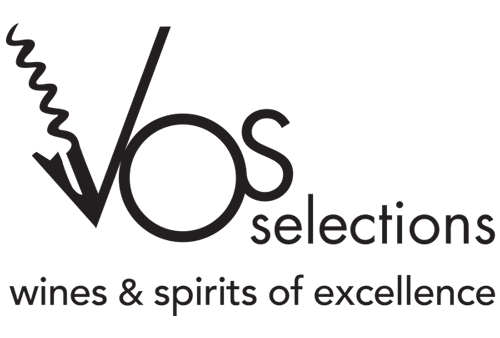Chloë, reporting from Rions – part 1
Our very own Chloë Schwartz left on June 25 for a 6 month internship at Château Haut-Rian, in Entre-Deux-Mers. After a few days in Paris and a long, hot, and epic train ride during which the air-conditioning broke, transforming the usually civilized TGV into a slightly less pleasant experience, she arrived in Rions. This small medieval village, population 1565 at the latest census, now gloriously boasts 1566 inhabitants and one New-Yorker.
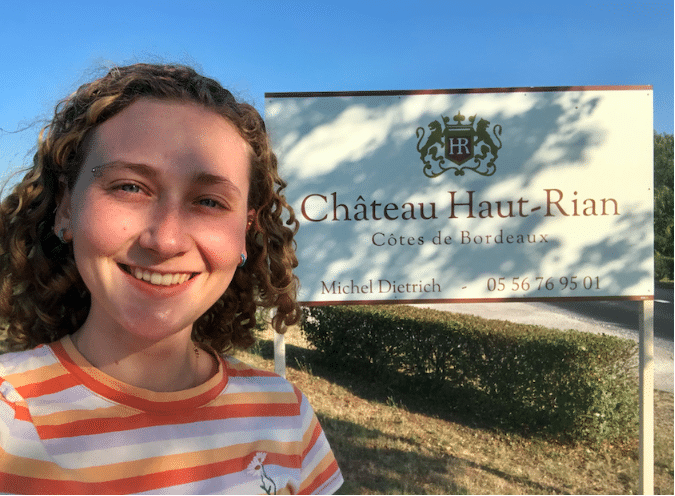
“Greetings from the Entre-Deux-Mers, where it is very hot (90°…although it drops to the high 50s at night ) and very dry. I have spent most mornings over the last two weeks watering (arroser) the same young parcel of Petit Verdot and Cabernet Sauvignon (after the vines are two years old, watering is no longer allowed, except for that released by the field workers wink wink…).
The tractor runs out of water after about 2 rows, so there is a 1:1 ratio of time spent watering and time spent waiting for the tractor’s return from the small reservoir back at the winery. Today, Pascal had just returned with the tractor and we had completed 1 row, when he announced it was 11:50am and we had to stop because he must have lunch at noon. He had to drive the tractor back to the winery by passing through the row we would have watered, but the 5 extra minutes it would have taken to water were no match for a 12pm lunch.
Earlier in the week, I attended the réunion du syndicat, or appellation meeting, for the Entre-Deux-Mers, where everyone was talking about watering their young vines. Other topics discussed included a terroir study currently underway, whether it was allowable for a young person to take charge of the appellation Instagram (unclear, as he is not a full member of the promotion committee because nobody wants to give up their seat), the value of attending Vinexpo (also unclear), a glossy 20-second video that the appellation had produced advertising …nothing (clearly the promotion committee needs some young blood), and surprisingly little interest in the genealogy of old sémillon vines (an issue raised by Pauline – note: Pauline Lapierre, owner/winemaker at Château Haut-Rian), who is the only female member and one of three members under 50). It was exactly the way I imagined an appellation meeting would be, down to the man sleeping in front of me and the man next to me making side comments that everyone could hear. At the (of course) wine tasting afterwards, the subject of Bordeaux Bashing came up. The vignerons are frustrated because while they are technically in the same Bordeaux as the big châteaux, they feel closer to a winegrower in the Loire and feel that the dislike they receive is unwarranted.
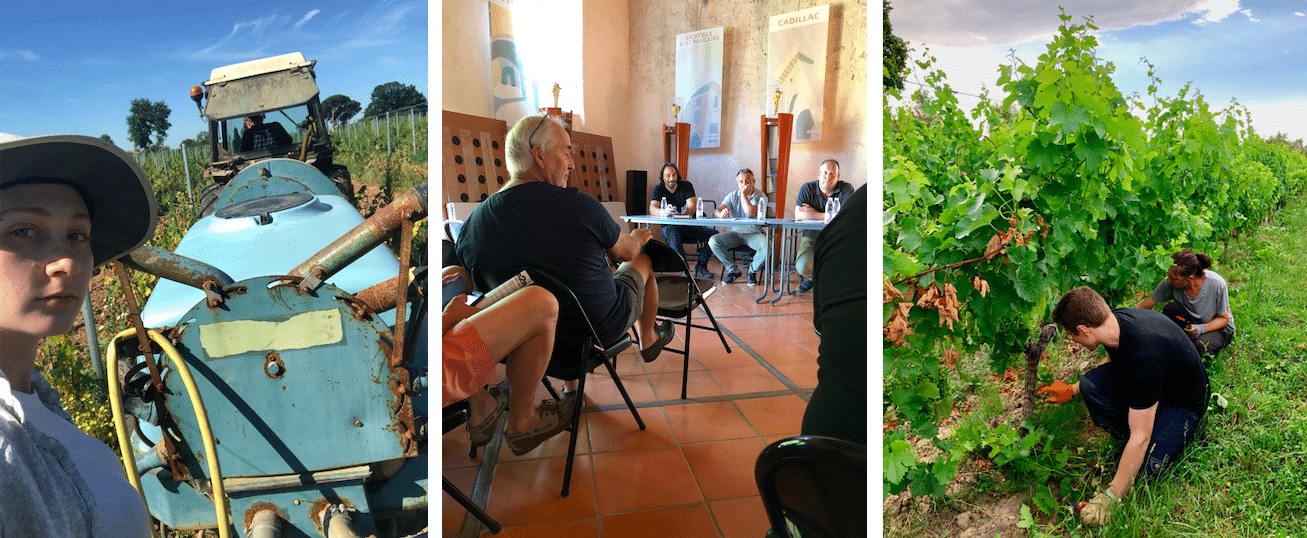
Pascal, behind the wheel, waters one row of young vines while Chloë, behind the tractor, waters the other one / the legendary Réunion du Syndicat / épamprage (pulling the lower level shoots off of the vines).
I’ve spent a lot of time this week hand-labeling bottles. One of Haut-Rian’s new customers is the #3 Pétanque player in the world, who uses his celebrity(?) to sell wine on the side. However, his clients will only buy wine if there is some sort of medallion on the bottle, and I had the pleasure of affixing the stickers (macarons), which came from a contest in Japan (and instead of coming in a roll or in groups of 6 or 12, came on little pieces of paper grouped by 5). Haut-Rian does not have an in-house bottling set up; a contractor comes to the winery and does it once a month or so. Last time this happened, they ran out of labels. I affixed three different labels to 8 pallets-worth of wine going to Texas and Germany this week. At one point, while carefully placing a “bee friendly” sticker, I noticed a dead bee lying on the floor.
Besides the more robotic activities, I am working on a massal selection project on a plot of 90-year-old sémillon vines. In a 22-row section, I have selected 100 vines to track over the coming months. I’m measuring everything from the width of the root and the number of shattered berries (coulure) to taste and vine shape. From the 100, approximately 10 will be selected and replanted. From there, the 10 will be studied and winnowed down to determine the best.
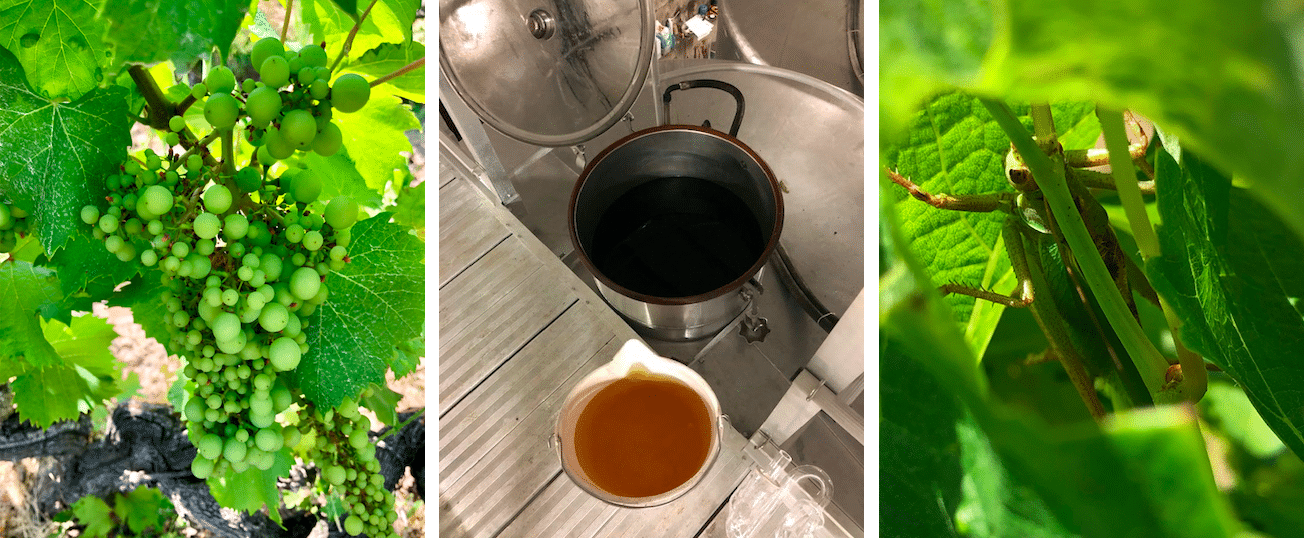
Counting the number of shattered berries (coulure) to select plants of old-vines Sémillon for a massal selection project / topping off the tanks / grasshopper cooling off in a vine.
Currently there is one organic plot and Pauline plans to convert everything to organic in the coming years, as the writing is on the wall and the government is banning more and more herbicides and pesticides. Her biggest customer in France actually requested that she convert. She insists it has nothing to do with this exchange she heard at a wine store she was shopping at in Paris:
Person A: Should we get a Bordeaux?
Person B: No, that’s full of pesticides. Let’s get a Burgundy.
Harvest is predicted to begin (latest) the first week of September. First, they will hand-pick sémillon for a crémant they are making for the first time; then they will pick by machine for white, then rosé, and finally red.
There is no work here that is not physical on some level, although épamprage (pulling the lower level shoots off of the vines) last week was a different kind of sore from the work in the cellar. The hoses (tuyaux) used to pump wine are incredibly heavy to pull around! The other day I spent over an hour squeegeeing tartrates out of a tank, which was both steamy and exhausting. It turned out that NaOH (Sodium hydroxide) does a better job at removing them than me, but the extent to which I needed to clean the tank had gotten lost in translation.
Yesterday, we carried buckets (seaux) full of Bordeaux Blanc via ladder up to the catwalk and poured it into the tops of tanks. How much wine is wasted via sloshing?
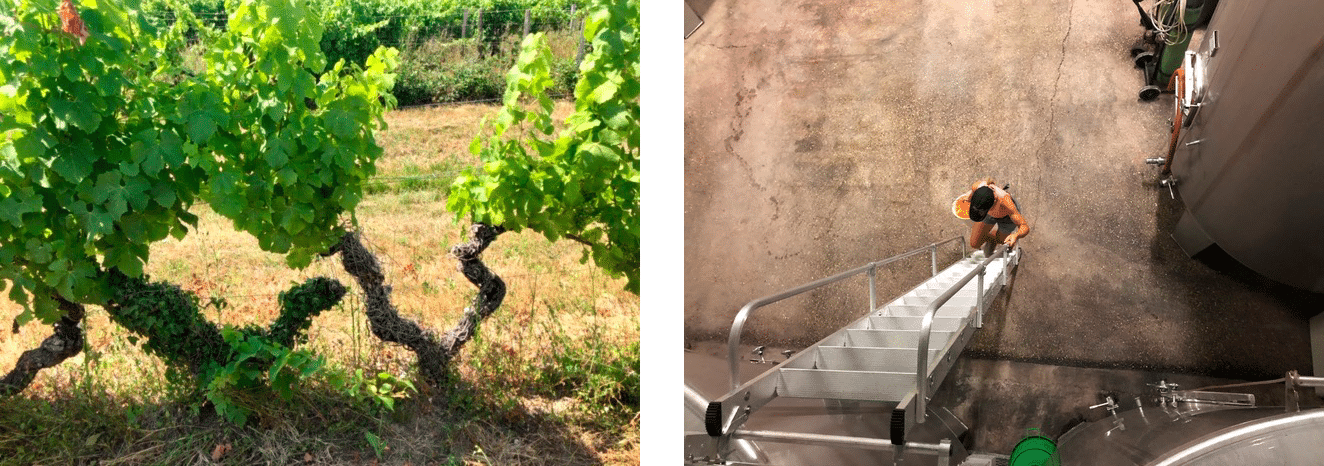
90+ year old vines of Sémillon that will be used for a massal selection project / carrying up buckets of Bordeaux Blanc to top off the tanks.
I have to say that my new coworkers are incredibly nice – and much quieter than a New York squad!, and I have been warmly welcomed, despite my thick American accent.
If you’ve read this far, thank you so much! I could say so much more about life at a small winery (company bbq this week!) and in a small village, but I’ll save it for a subsequent message!
Cheers,
Chloë”
